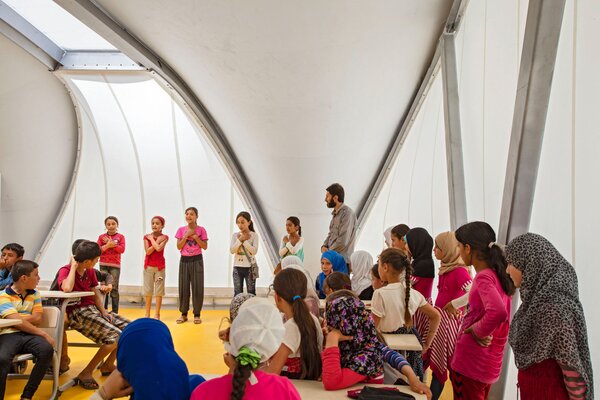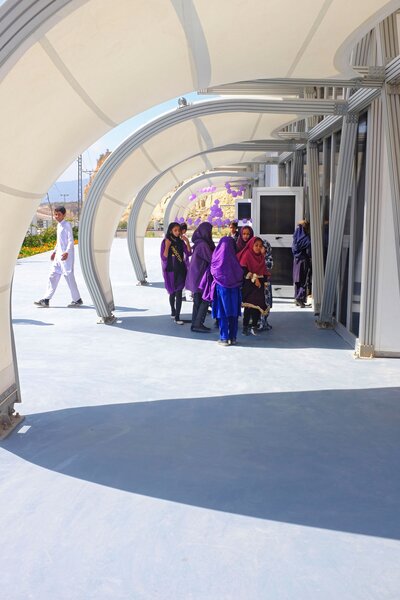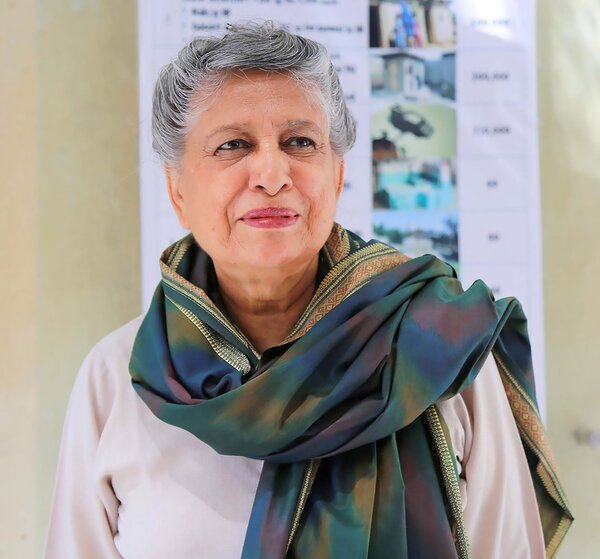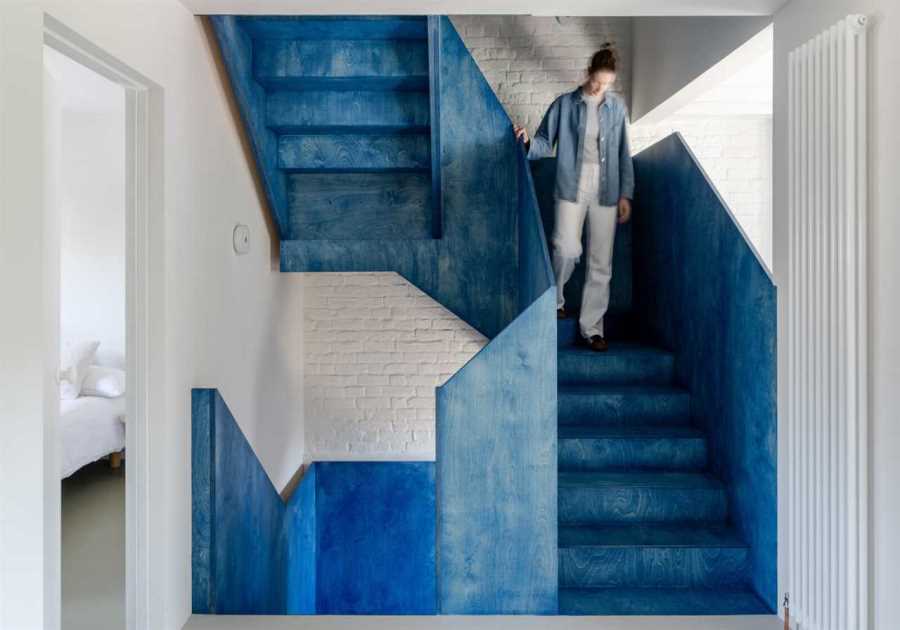A growing number of architects are designing for displaced people, prompting a reconsideration of what ostensibly temporary living should look like.
With the December press release announcing a series of modular tents meant to be utilized as schools, clinics, and emergency shelters for displaced communities, Zaha Hadid Architects (ZHA) included a series of photos. In one, smiling, happy children are sitting at their desks underneath sloping, windsail-like arches, the distinctly modern combination of aluminum frame and taut, white "tent" fabric.

Zaha Hadid Architects began the process of designing tents, pictured full of students in Turkey, in 2015. They are intended to be used for a number of purposes, including schools and clinics, and to be able to be transported and easily set up in many locations. According the firm, each tent is made with "an identical extruded aluminium archstructure as its primary member that allows for longer spans [and] interior flexibility, and ensures the fabrication process is faster, cheaper, and manageable."
Photo by Luke Hayes
When I visited one of the ZHA-designed schools in Pakistan in March, it looked like the picture come to life. Thirty-two students, mainly internally displaced people (IDPs) who had been uprooted by floods and earthquakes, were lined up in their seats, the heat and sun of the outside diminished by the white walls.
Nestled in a craggy hillside on the outskirts of Islamabad, the school isn’t where you might expect it to be. It’s hidden away inside a brand-new private housing development, one of many in Pakistan, where faulty state infrastructure and chaotic urban centers are driving a growing middle class into private "societies" that function as their own cities.
How the school ended up in such a place is telling: Zaha Hadid Architects originally designed it in collaboration with an NGO called Education Above All, a foundation created by Qatar’s former first lady, Sheikha Moza bint Nasser, for a Syrian refugee camp in Turkey. Education Above All aimed to bring a pilot of the tent school to Pakistan through another NGO called Alight, which identified a need for a school in the area. A private housing society obliged and donated some land. And, thus, an award-winning architecture firm’s structure found its home, not in a refugee or an IDP camp, but at a multimillion-dollar construction site.

This ZHA tent, outside Islamabad, is on land donated by a local private housing society.
Photo by Meher Ahmad
Twenty-seven more of the tents piloted in Pakistan and Turkey have been promised by Qatar’s World Cup committee to the International Organization for Migration and the Qatar Red Crescent in an effort by the Qataris to increase their charitable footprint around the world. Though the location of this one is unusual, its students, all of whom were pinpointed by aid workers as dropouts in need of stable schooling, don’t mind it one bit.
I asked them what they thought of the building. "It looks like a cloud," said a13-year-old boy named Nauman. "I think it looks like a plane," another student named Erum told me. I asked the class, whose members ranged in age from 9 to 15 (the school groups them by skill level instead of age), if they like the school. In unison, they responded, "Yessss."
"We treat the structure like our baby," the school’s manager, Amna Anum Subhani, told me. I didn’t grasp what she meant until I saw workers carefully wiping down the sides of the tent. Amid the arid landscape and open construction that surrounds the school, the all-white fabric quickly collects dust. One of the workers told me they wash it down every 10 or so days with soap to keep it white and clean.
Inside the school, where the students were celebrating International Women’s Day, I noticed some of the posters and colorful signs—hallmarks of any classroom—sliding off the walls. Subhani clocked me looking: "Yeah, we’ve tried a few different types of tapes," she laughed. "Nothing works." She said she has thought about using glue, but she is so afraid of damaging the building that she and her colleagues resorted to using signboards that they roll into the classroom.
Despite some basic design misgivings, everyone from the students to the teachers told me how much they enjoyed being inside such a futuristic structure. "There are two feeder schools that bring students into this one, and everyone is really competitive and excited to come to this campus because of the Zaha Hadid building," said Subhani. "They feel proud of the school."

Architect Yasmeen Lari’s Makli ZeroCarbon Cultural Centre (seen up top) was built in Pakistan in 2017. It is made of bamboo, a highly sustainable material found locally. "I believe in zero carbon. I don’t believe in high-tech solutions. I think the world needs to recognize that, and architects ought to do that," Lari says.
Photos Courtesy Archive Yasmeen Lari
See the full story on Dwell.com: Is the Future of Refugee Housing Permanence?
Related stories:
- Swimply, and the Public/Private Pool Divide
- The Wiyot Tribe Is Getting Its Land Back and Making California More Affordable
- What Happened to the World Cup Shipping Container Hotels?
Read More
By: Meher Ahmad
Title: Is the Future of Refugee Housing Permanence?
Sourced From: www.dwell.com/article/future-of-refugee-housing-73a34bc0
Published Date: Wed, 19 Apr 2023 22:20:38 GMT
Did you miss our previous article...
https://trendinginbusiness.business/real-estate/a-house-of-healing-hearts
.png)





